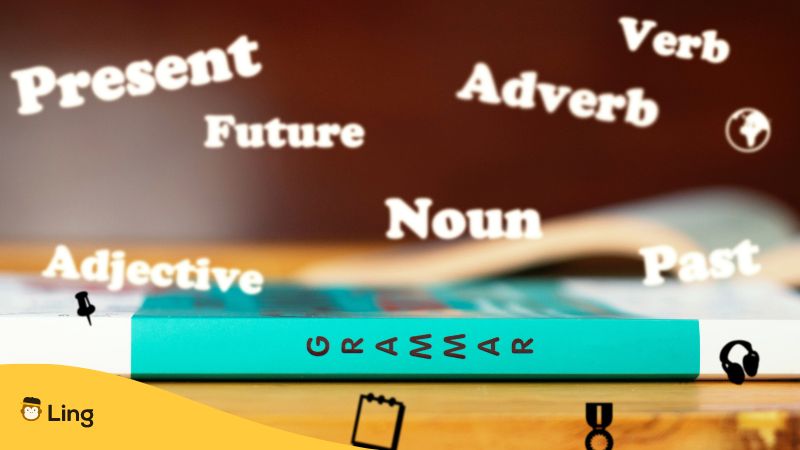An Urdu adverb is called متعلق فعل (Mutaliq fail), and its functions are quite similar to the English language. Often, adverbs in Urdu modify other adverbs. Today, we’ll check some examples of Urdu adverbs and also how they are in a sentence and their pronunciation. Let’s get started!
Adverbs are a fascinating part of the language that adds depth and meaning to verbs and adjectives. It’s easy to confuse them with adjectives, which modify nouns, but adverbs are specifically connected to action words – verbs. Just look at the name, adVERB, and it becomes clear! Let’s get to know Urdu and more about Urdu adverbs with these fun-filled lessons.

Functions Of Urdu Adverbs
In the Urdu language, adverbs play a crucial role in describing how someone performs an action. Think of them as a telescope that helps you see things clearly from a distance. The descriptions and adverbs work together to provide a deeper understanding.
First and foremost, adverbs modify verbs. For example, “He runs fast” translates to “وہ تیز بھاگتا ہے” (Woh tez bhagta hai). Here, “tez” means fast, modifying the verb “bhagta” meaning run. It tells us how he runs – fast! Adverbs can also modify adjectives, indicating the degree or intensity of something or someone. Let’s take an example: “She is a very beautiful girl” translates to “یہ بوہوت پیاری لڑکی ہے” (Yeh bohot pyaari larki hai). In this sentence, “bohot” means very, modifying the adjective “pyaari” meaning beautiful.
Adverbs also help indicate time, like in the sentence “I saw him yesterday” which translates to “کل مہینے اسے دیکھا” (Kal maine usse dekha). Here, “Kal” means yesterday, answering the question “When?”. Furthermore, adverbs can indicate place, such as in the sentence “He came here” which translates to “وہ ادھر آیا” (Woh idhar aaya). In this case, “idhar” means here, answering the question “Where?”.
By understanding the role of adverbs in Urdu, you’ll gain valuable insights into how actions, descriptions, time, and place are expressed in the language. So, let the colorful world of Urdu adverbs enhance your understanding and bring clarity to your language journey!
Easy Trick To Identify Urdu Adverbs
A handy trick for spotting Urdu adverbs is to look for words that end in “-e” or “-i” in their base form. These suffixes are commonly attached to nouns and adjectives in Urdu to transform them into adverbs. That’s why it’s beneficial to explore nouns and adjectives alongside Urdu adverbs.
Let’s take an example: the adjective “fast” (تیز Tez) becomes the adverb “تیزی سے Tezi se” (quickly) by adding the “-i” suffix at the end. Similarly, the adjective “good” (اکچھا Achha) becomes the adverb “اکچھے سے Acchay se” (well) by adding the “-e” suffix.
However, it’s important to note that not all Urdu adverbs follow the “-e” or “-i” pattern. There are other types of adverbs in Urdu that don’t adhere to this rule. In such cases, it becomes helpful to pay attention to the word’s context and its function within the sentence to determine if it functions as an adverb or not. So, keep an eye out for those intriguing Urdu adverbs and embrace the nuances they bring to the language!

Types Of Urdu Adverbs With Examples
Now that we have a good understanding of the function of adverbs and a nifty trick to identify them, let’s delve into the various types or categories of Urdu adverbs that will solidify our comprehension. Brace yourself for a fascinating journey through Urdu grammar with these categories, accompanied by illustrative examples!
- Adverbs of manner: These adverbs enhance how an action is performed. For instance, “دھری سے Dhairay se” (slowly) and “مسلسل Musalsal” (continuously).
- Adverbs of place: As the name suggests, these adverbs describe where an action takes place. Examples include “وہاں Wahan” (there) and “کہیں Kahin” (somewhere).
- Adverbs of time: These adverbs specify when an action occurs, such as “آج Aaj” (today) and “ابھی Abhi” (now).
- Adverbs of degree: They indicate the extent or intensity of an action or quality. Consider “تھودا Thoda” (a little) and “ذرا Zara” (slightly).
- Adverbs of affirmation or negation: These adverbs indicate the affirmation or negation of a statement. For example, “ہاں Haan” (yes), “نہیں Nahin” (no), and “بلکل Bilkul” (absolutely).
- Interrogative adverbs: Used to ask questions, these adverbs include “کہاں Kahan” (where), “کب Kab” (when), and “کیسے Kaise” (how).
- Adverbs of reason: They shed light on the reason behind an action or event, like “اس لئے Is liye” (therefore) and “کیوں Kyun” (why).
- Adverbs of frequency: These adverbs indicate how often or the number of times something occurs. For instance, “باقاعدگی سے Baqaideki se” (regularly) and “مکمل طور پر Mukkammal tor par” (seldom).
These represent some of the main types of Urdu adverbs, and there may be some overlap between these categories as well. Embrace the diverse world of Urdu adverbs, and watch your language skills flourish with their enriching nuances!
Urdu Adverbs In Sentences
The list above has some commonly used adverbs with Urdu meanings, but we also want to see these in sentences to understand their place in a sentence structure. Check out some of them:
| English | Urdu | Pronunciation |
| I regularly learn Urdu. | میں باقاعدگی سے اردو سیکھتا ہوں۔ | Main baquaideki se Urdu sikta hoon. |
| Just now, I got the call. | ابھی، مجھے فون آیا۔ | Abhi mujhe fon aaya. |
| Please keep the water there. | براہ کرم پانی وہیں رکھیں۔ | Bara karam pani wahi rekhiye. |
| The phone was ringing continuously. | فون مسلسل بج رہا تھا۔ | Phone musalsal baj raha tha. |
| I need a little salt in my food. | مجھے اپنے کھانے میں تھوڑا سا نمک چاہیے۔ | Mujhe apne khane mey thora namak chahiye. |
| No, we don’t need that. | نہیں، ہمیں اس کی ضرورت نہیں ہے۔ | Nahi, humey iski zaroorat nahi hai. |
| How did that happen? | یہ کیسے ہوا؟ | Ye kaise huwa? |
| Why did she talk like that? | وہ ایسی بات کیوں کر رہی تھی؟ | Woh aisi baat kyun kar rahi thi? |

Urdu With Ling
Looking to master Tamil? Look no further than the Ling app! It’s the ultimate resource for learning Tamil and 60+ other languages, providing you with the best tools and practical lessons to become fluent in no time. From vocabulary and grammar to pronunciation and cultural insights, the Ling app has got you covered. Start your Tamil language journey today with the Ling app and unlock a world of language learning possibilities!
Download it now from the App Store or Google Play Store now and learn Urdu in a new way!
































































